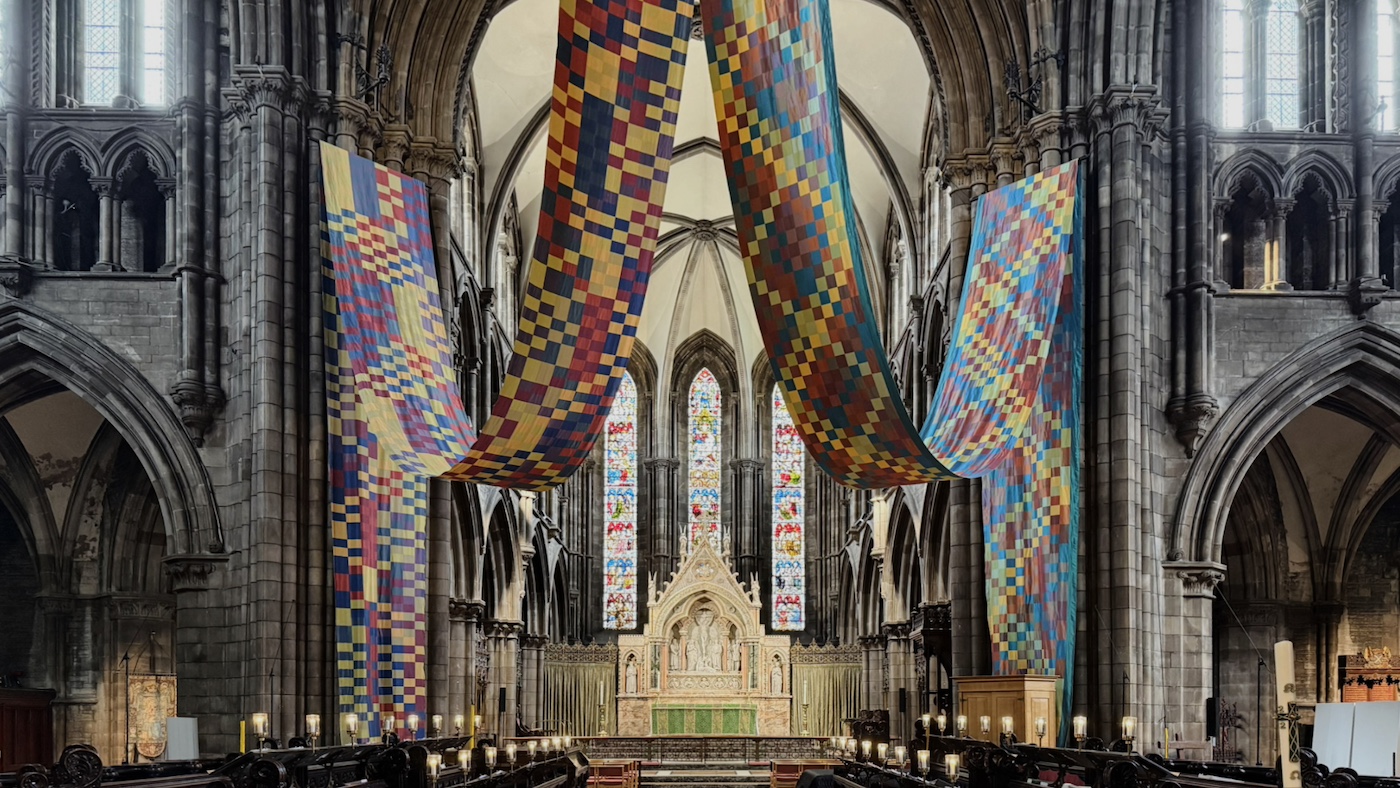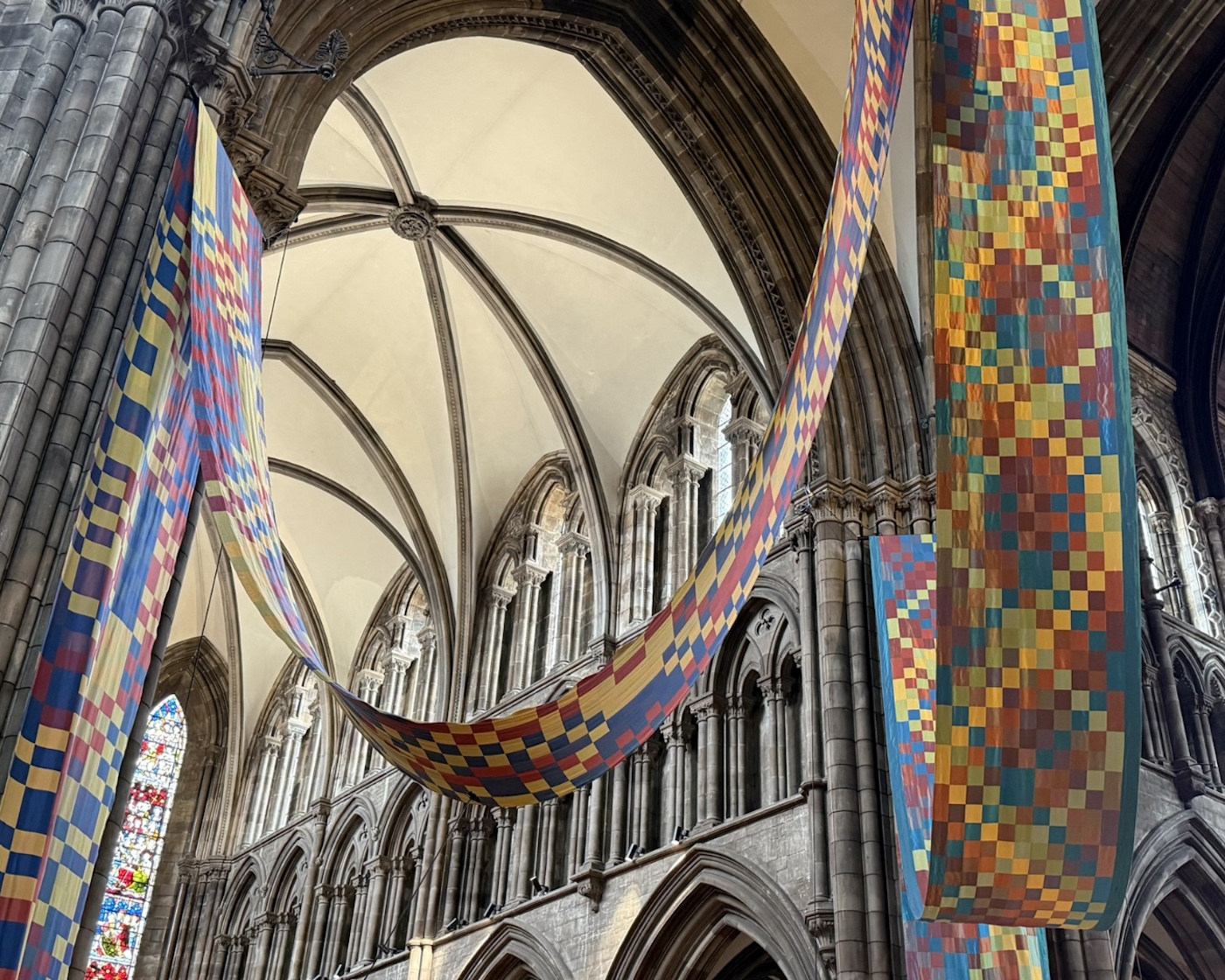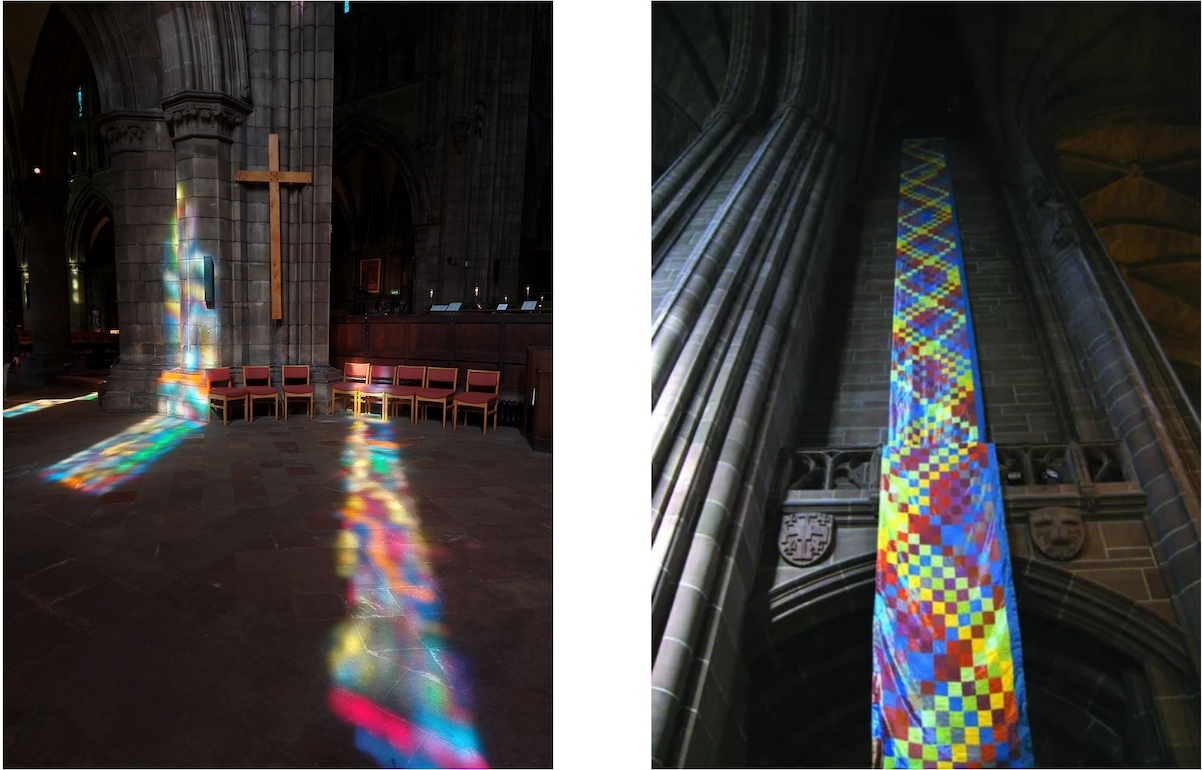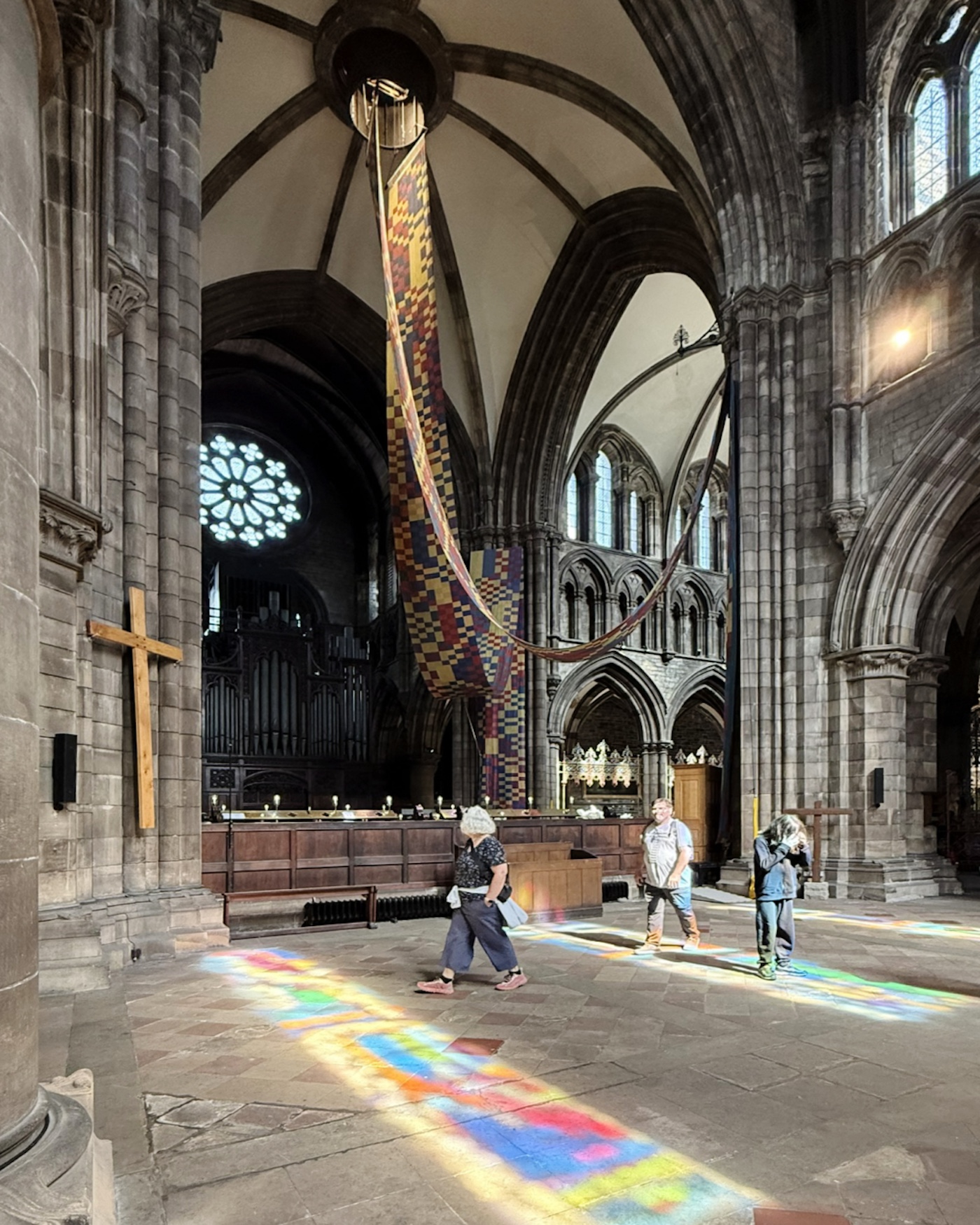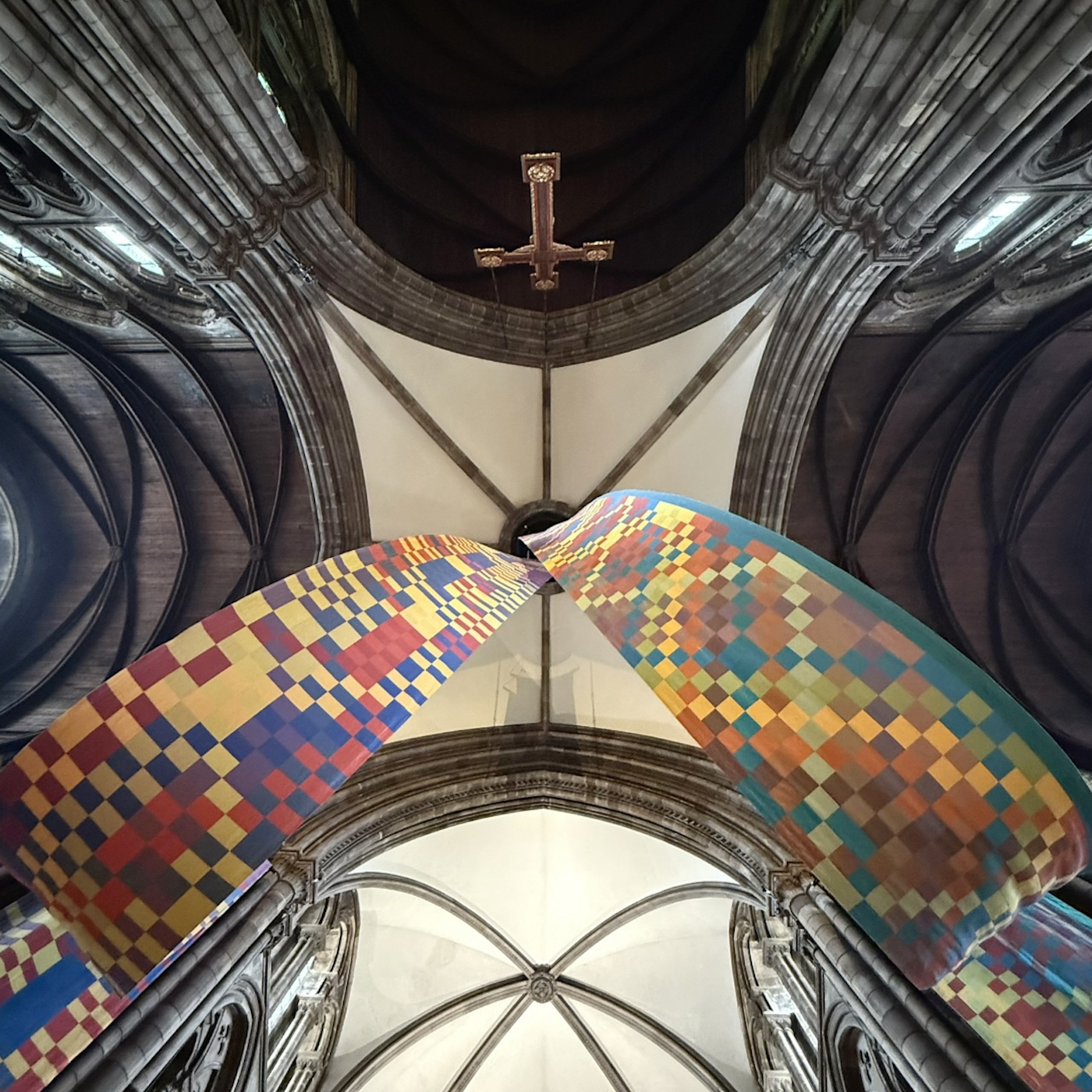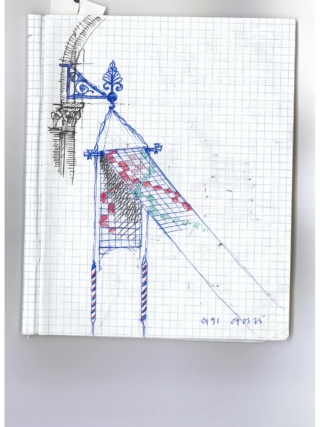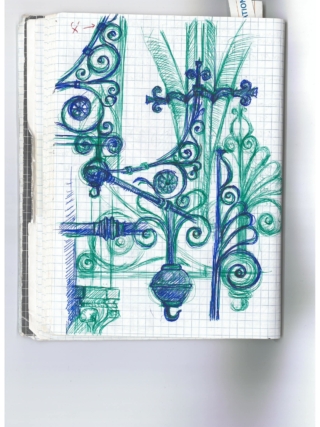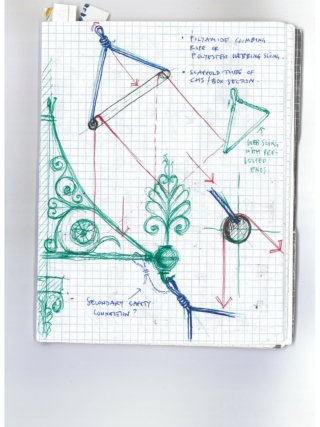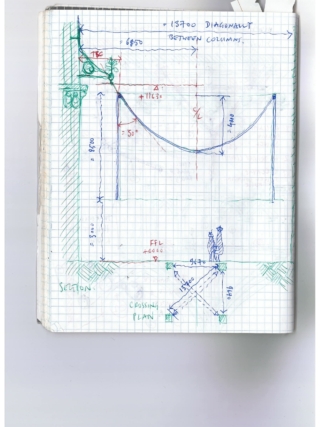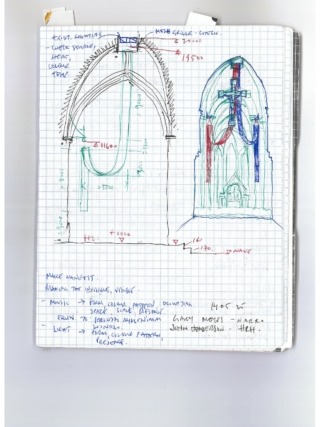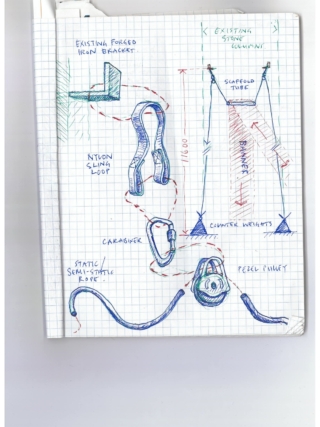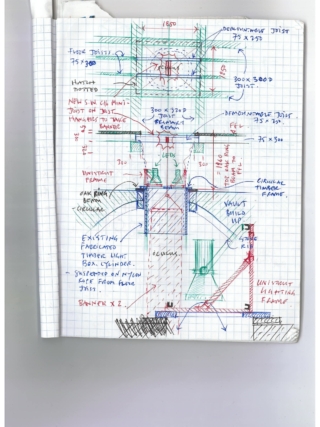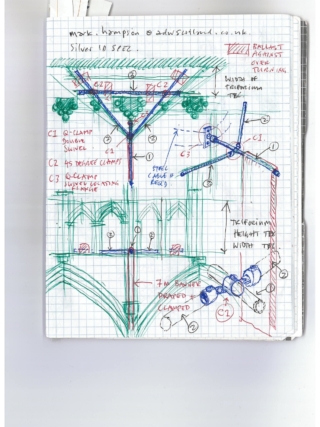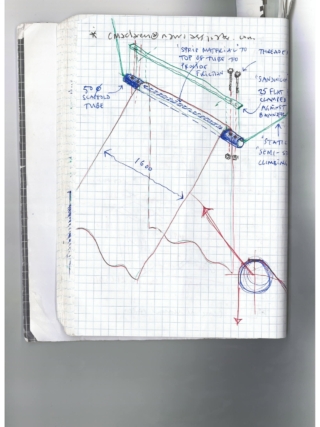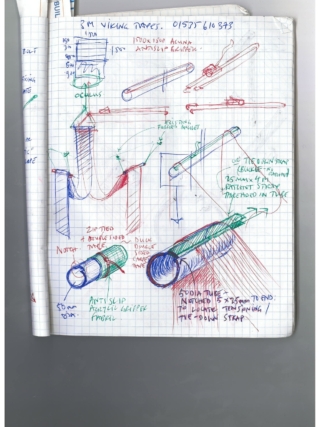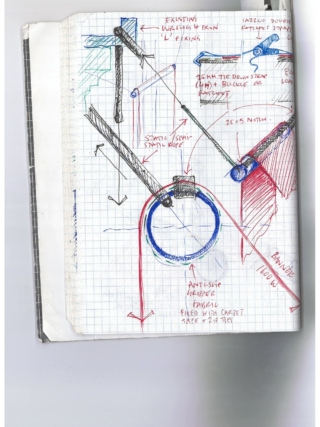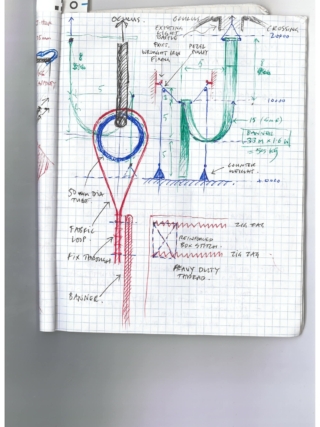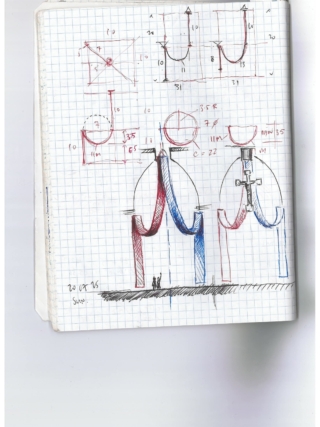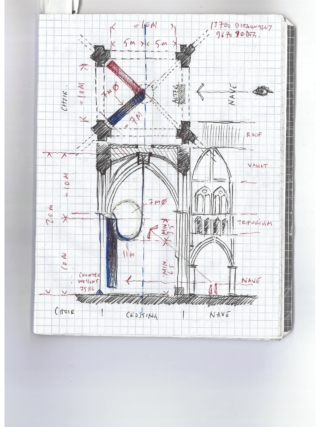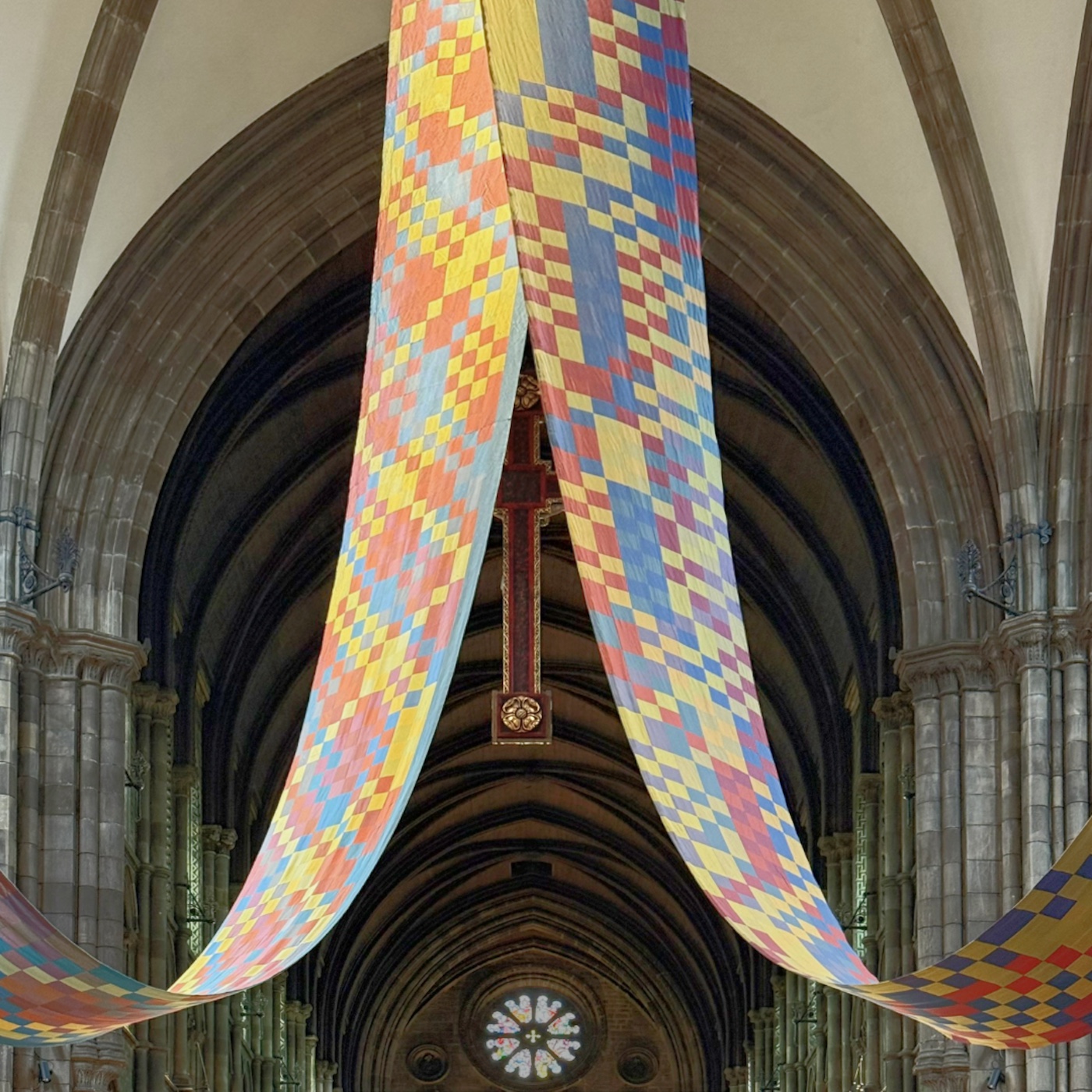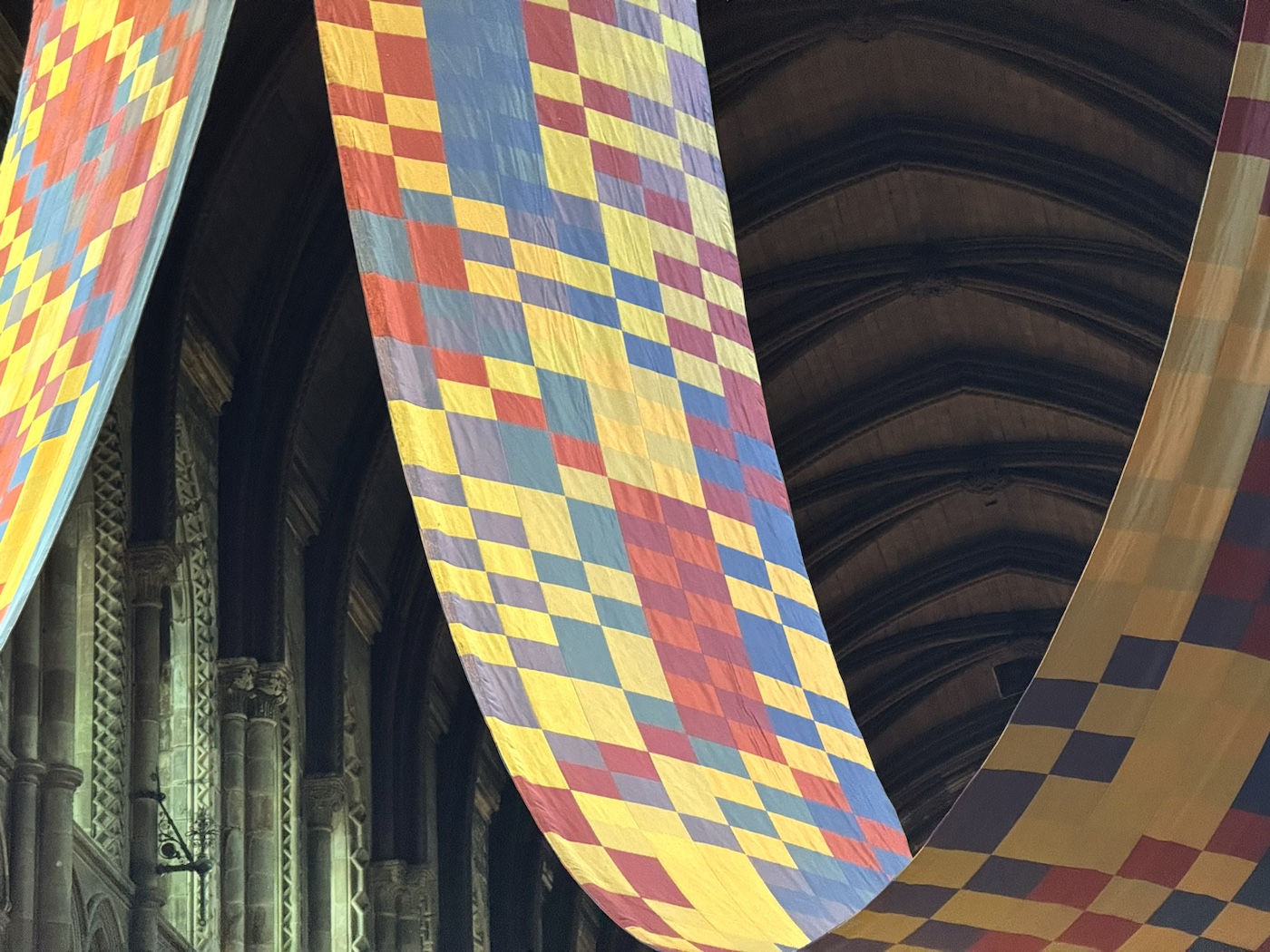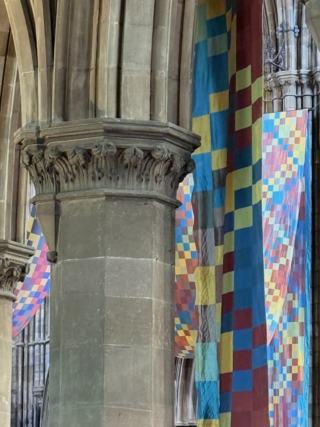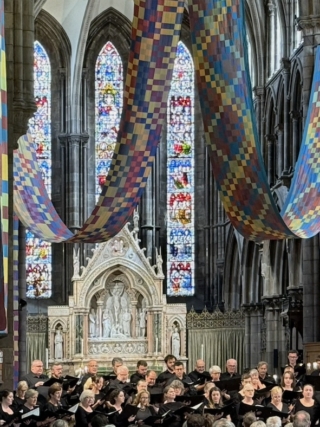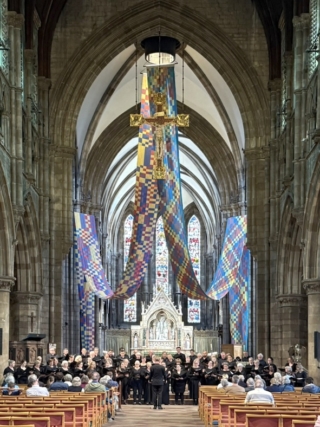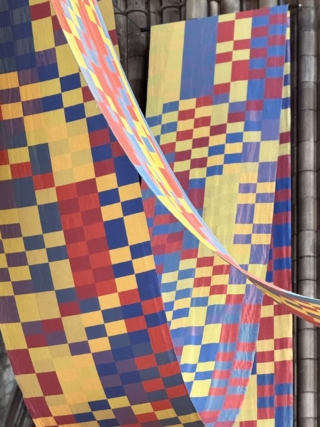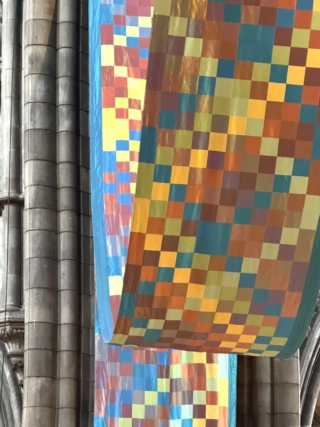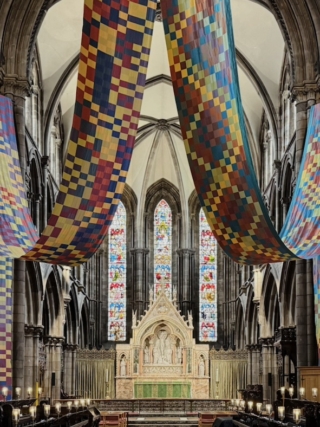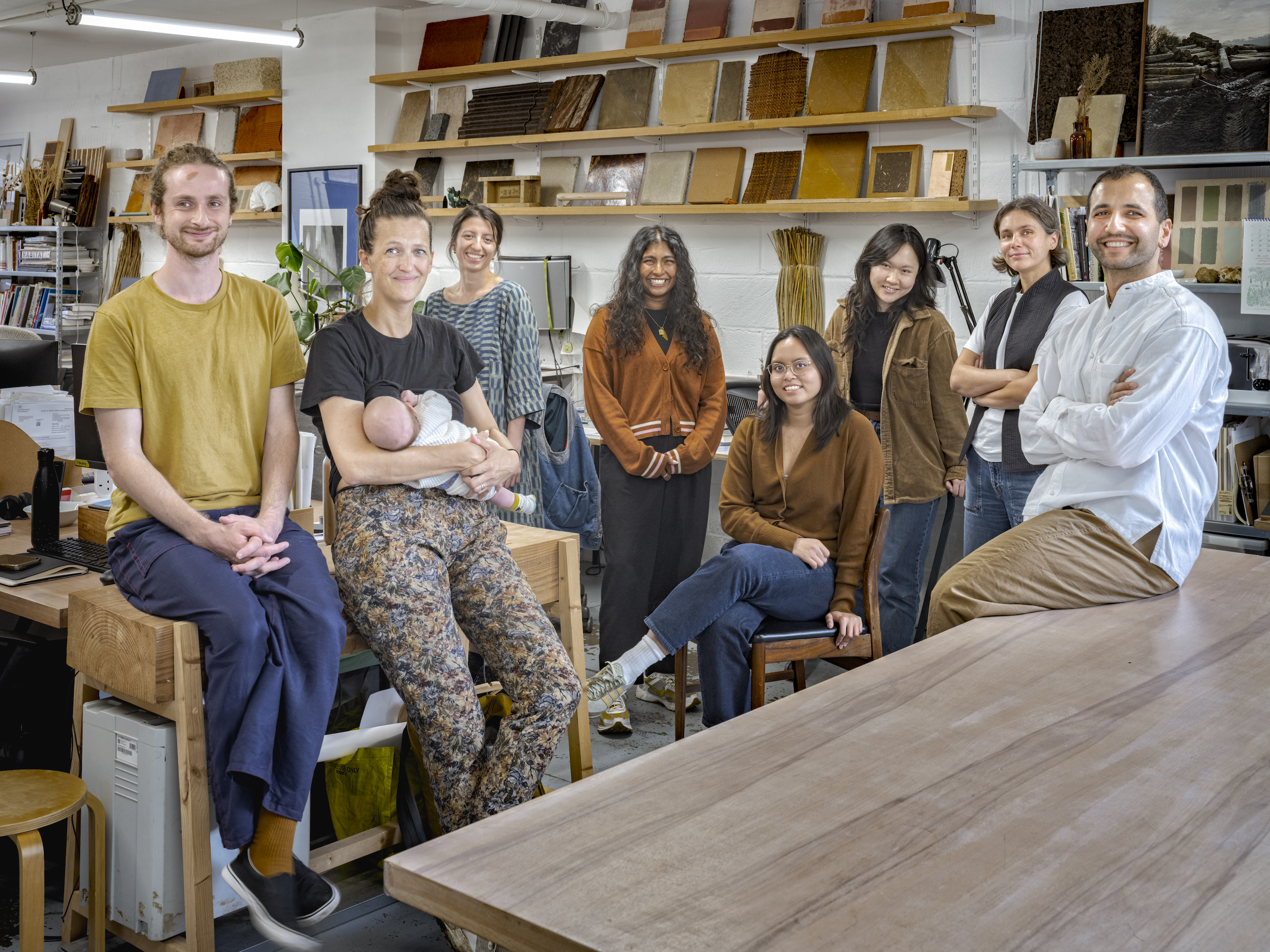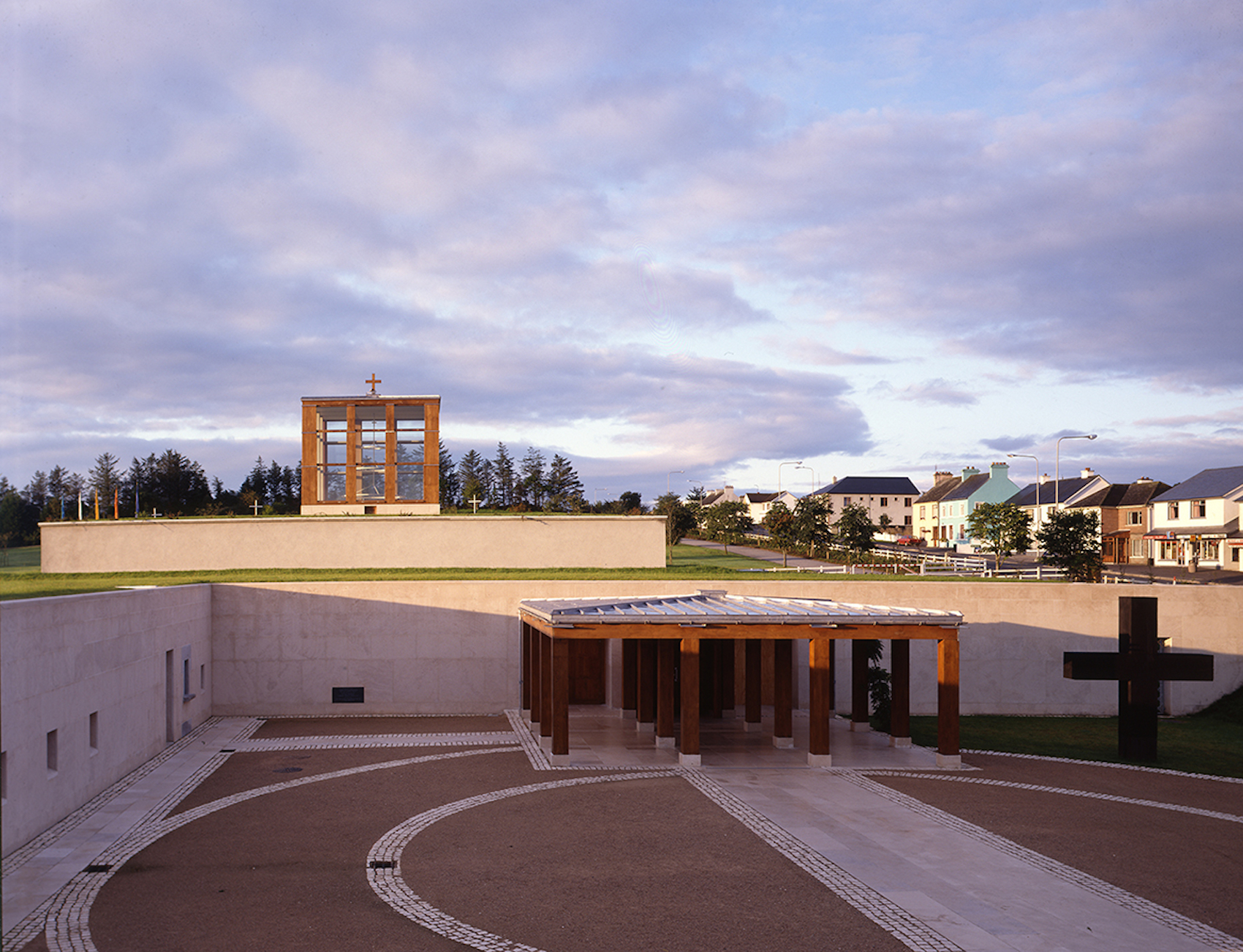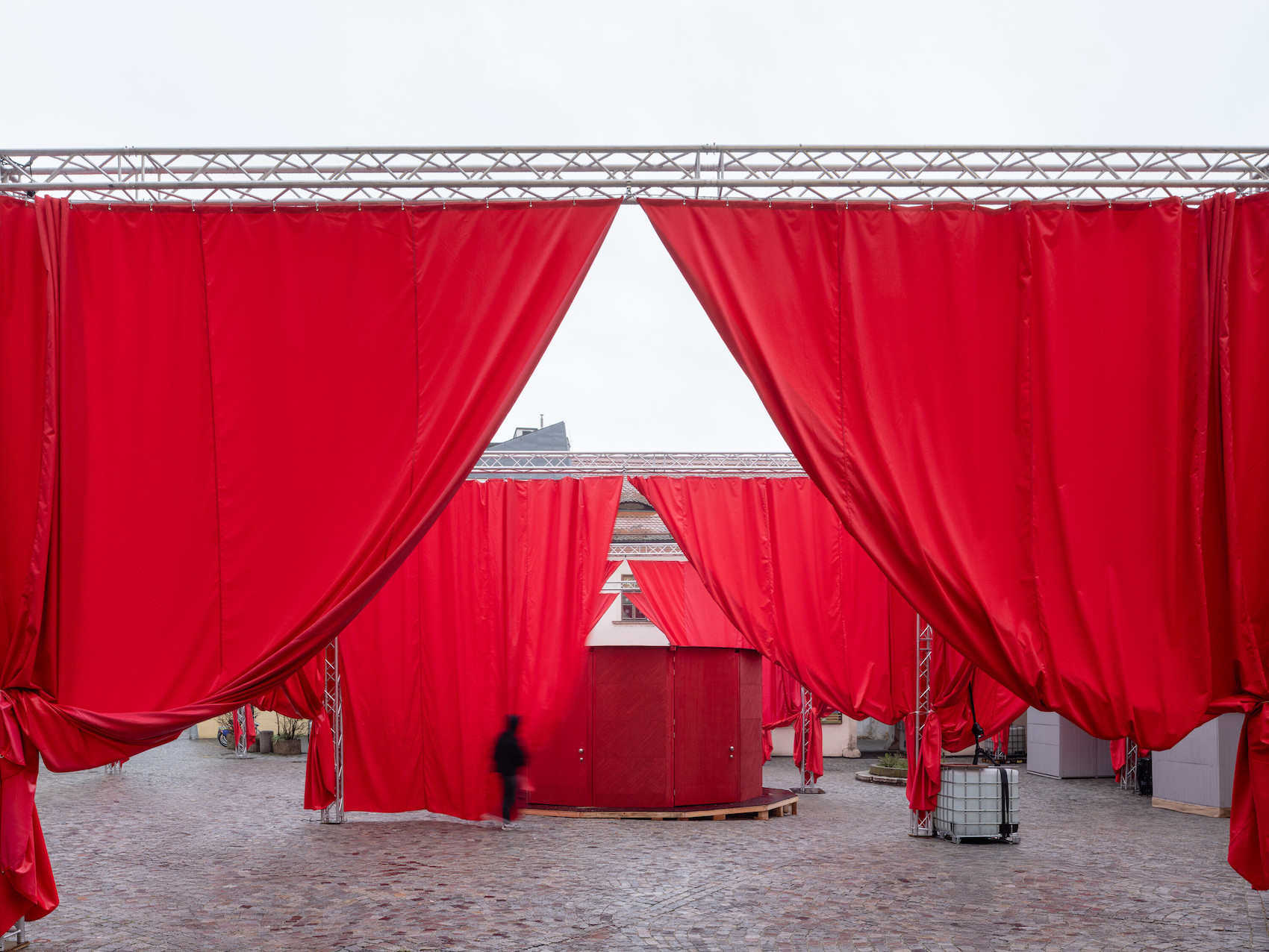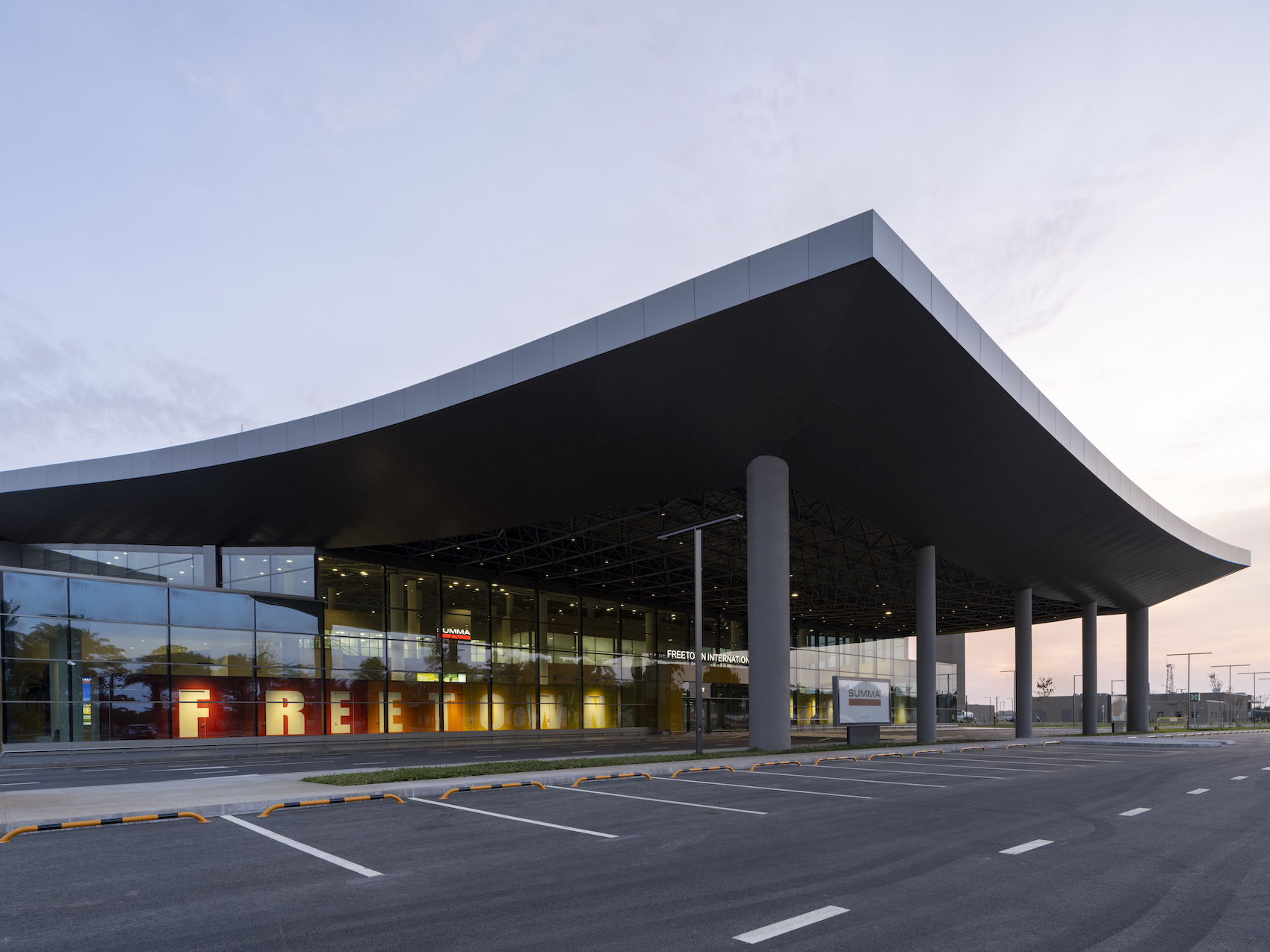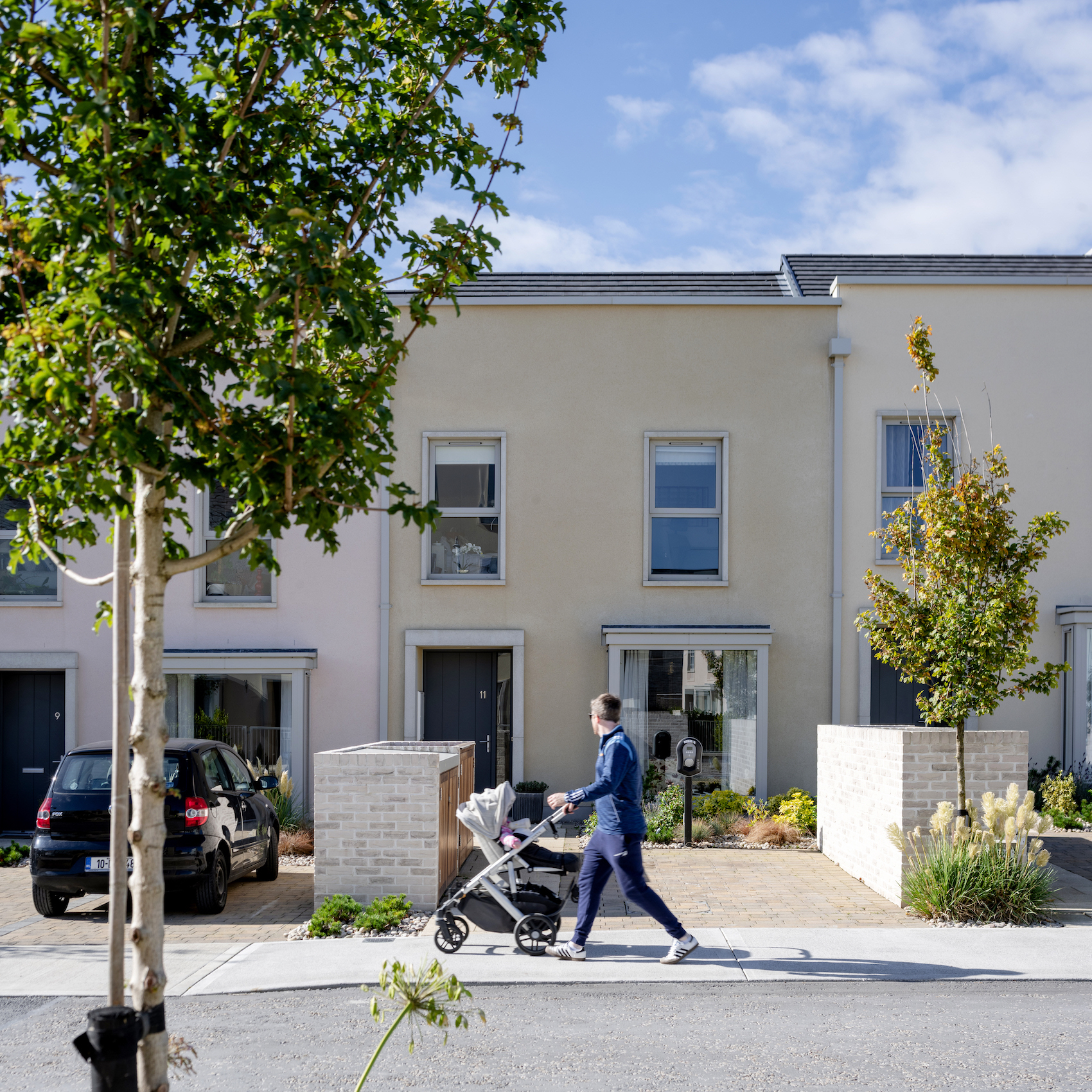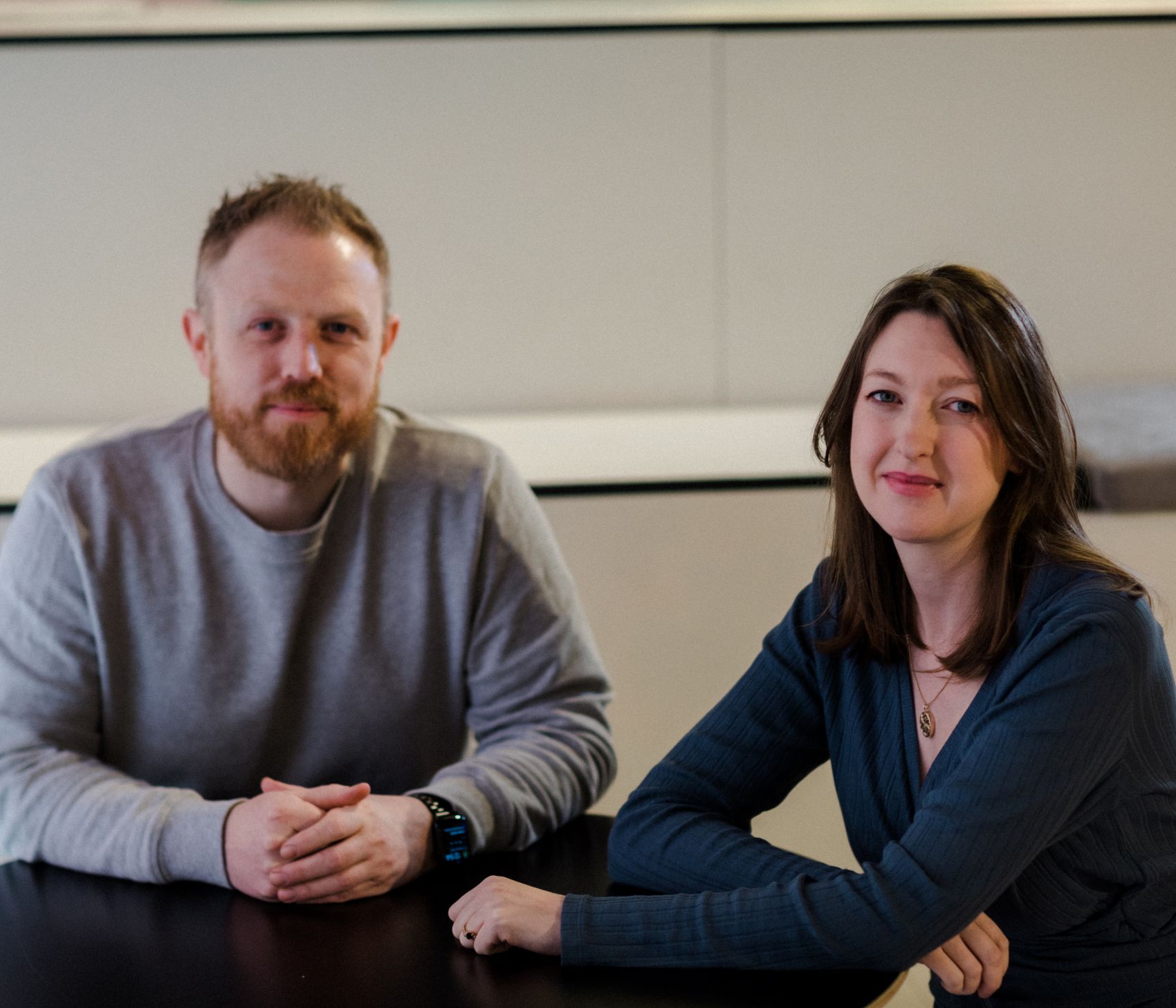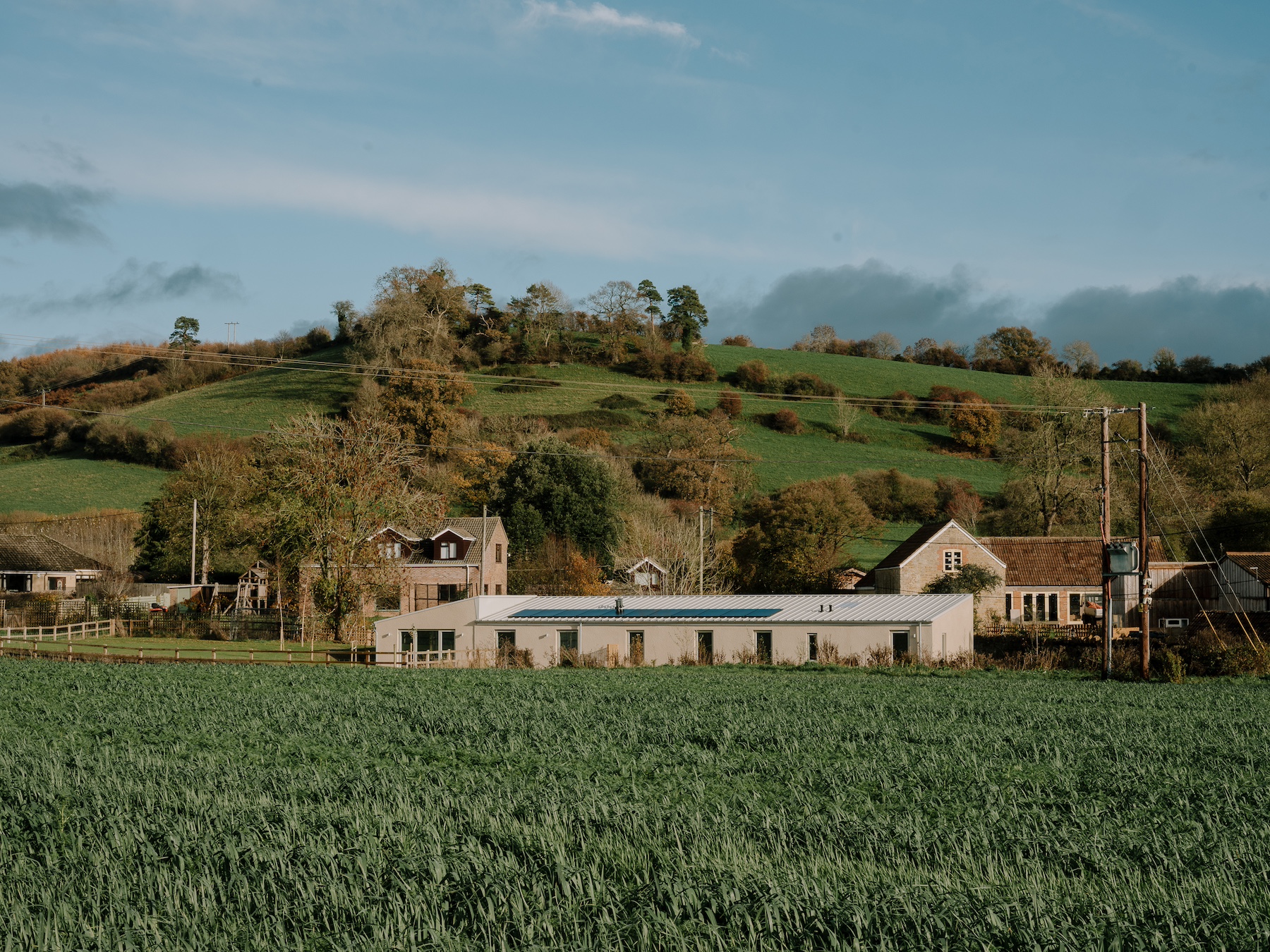Glasgow-based artist Edward Bruce and Edinburgh architect Nick O’Neill transform St Mary’s Episcopal Cathedral with an Eduardo Paolozzi-inspired colourful installation that draws on the ancient art of bell ringing.
Suspended high above the Choir in Edinburgh’s St Mary’s Episcopal Cathedral, a cascade of woven banners ripples in church light, their shifting colours echoing the peal of bells from the tower above. Conceived by artist Edward Bruce in collaboration with architect Nick O’Neill of aaltspace architects, Ringing the Changes translates the complex notations of campanology into 176m of vivid textile, draped from the crossing 20 metres above the congregation.
The installation, which runs through to 20 October 2025 as part of the Cathedral’s Summer Festival, takes its cue from the centuries-old mathematical patterns used in bell ringing. Bruce’s fascination with the tradition is rooted in childhood – his father is a ringer in Oxford – and in his long-standing interest in the codes, rituals and shared values embedded in everyday practices. A moment of revelation came when he converted bell-ringing sequences into colour: the result was an array of intricate, non-repeating patterns that seemed to dance and move.
The collaboration with O’Neill sought a home that could accommodate the work’s monumental scale and deep connection to bell ringing. St Mary’s, whose Society of Change Ringers has sounded the bells since its consecration in 1879, proved ideal. The Cathedral’s long tradition of supporting contemporary art, from Phoebe Anna Traquair’s murals to Eduardo Paolozzi’s stained-glass windows, made it a natural setting for a modern work grounded in heritage.
O’Neill’s design celebrates the scale of the Cathedral and the hidden craft of bell ringing. The banners appear to cascade from the oculus in the floor of the ringing chamber, embodying the music played by the unseen ringers. The longest pair frames the Rood Cross and the high altar beyond, while two shorter pairs flank the nave, drawing the eye upward to the work’s soaring geometry.
“I was struck by the similarity between bellringing notation which goes back centuries, and jacquard weaving which is also very old, and how they both appear very modern to our current digital age,” said Bruce. “I knew that bell ringers use complex diagrams to memorise the sequences of bells to be rung. When I rendered the numbers that represent each bell into a colour, I was astonished how this revealed amazing patterns that seemed to dance and move. They were so beautiful. I knew I had to find a way of showing this to people and so I came up with the idea of woven banners.”
For O’Neill, whose practice often explores the interplay of art and architecture, the project reinforces his belief in integrating artworks into the very fabric of a building. “Where the opportunity presents itself,” he says, “my goal has always been to combine architecture with art, so that a project is enriched by layers of meaning that hopefully give a greater feeling of joy to the users and building itself.”
Process sketches from O’Neill. (Credit: aaltspace)
“The cathedral is the tallest building in Edinburgh. Its bell tower is 90 metres high and weighs an amazing 5000 tons,” he added. “Yet when a peal is rung, the Ringers remain hidden from view. The banners are suspended so they appear to cascade from the oculus in the floor of the ringing chamber. Bruce’s patterned drapes are literally assembled from musical notes that swoop dramatically above the congregation. You could say they are a physical embodiment of the band of ringers. Looking up, viewers can see the specialist music they ring, revealed in all its complex beauty.”
Credits
Artist
Edward Bruce
Architect & Project Manager
Nick O’Neill, aaltspace architects
Structural Engineer
Narro Associates
Installation
HiSolution Rope Access Edinburgh Ltd
Client
St Mary’s Episcopal Cathedral
Funders
Creative Scotland Open Fund for Individuals (National Lottery)
Private donors via Crowdfunding UK


